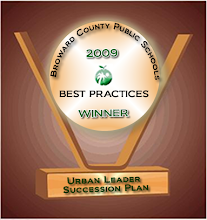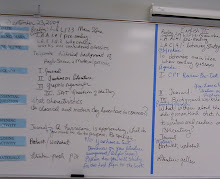 Response to Instruction /Intervention (RtI) is a result of NCLB and IDEA legislation. It is defined by Florida’s Department of Education as, “a multi-tiered approach to providing high quality instruction and intervention matched to student needs, using learning rate over time and a level of performance to inform instructional decisions.” The paradigm shift is moving from student placement as the primary focus to outcomes as the focus. It is the process of using assessment data to make decisions and provide services based on the results.
Response to Instruction /Intervention (RtI) is a result of NCLB and IDEA legislation. It is defined by Florida’s Department of Education as, “a multi-tiered approach to providing high quality instruction and intervention matched to student needs, using learning rate over time and a level of performance to inform instructional decisions.” The paradigm shift is moving from student placement as the primary focus to outcomes as the focus. It is the process of using assessment data to make decisions and provide services based on the results. There are several beliefs that drive a successful RtI process: (1) Assisting hard to reach students is the shared responsibility of all school staff members (2) Problem solving procedures are best applied as part of a school wide effort (3) Problem solving should make use of all appropriate resources (4) The primary puprose of problem solving is to solve problems by designing effective interventions (5) With appropriate support, teachers can assist a wide range of hard-to-teach students to achieve improved performance.
At each tier of the model, the process of defining the problem, analyzing the reasons, implementing services and strategies, and evaluating results is used to match available resources with student need.
Tier 1 includes core, universal instruction and supports. These are the teaching practices and behavior systems schools and teachers have in place to support all students. At this level, it is essential that the core curriculum and general education program be based on evidence-based practices. The task is to assure that the core curriculum and behavior support is effective for a major portion of the students. This requires a school to evaluate the systems in place to ensure success for most students. With tier 1 intervention 80 to 90 percent of the student population will be successful.
Tier 2 interventions are targeted, small group, supplemental interventions and supports for identified students. These supports are aligned with and delivered in addition to the academic and behavioral supports provided to all students. 10 to 15 percent of the student population will need this level of targeted support to be successful either academically or behaviorally.
Tier 3 instruction and intervention is individual, intense support tailored to the specific need of each student. Only 1 to 5 percent of the students will require this level of support. The evidence based interventions that are implemented for the targeted students are specific to the behavior or academic deficiency identified through data collection and analyzed by the collaborative problem solving team.
Before a student is referred for a comprehensive evaluation and/or alternate placement it is best practice to move up the tiers sequentially through tier 3. If these interventions are unsuccessful or too costly to maintain in the general classroom, referral for evaluation is appropriate.
What does the RtI process look like at your school location? As a school leader, how do you best support this process to ensure student success?








2 comments:
At my previous school our RTI team met weekly to discuss interventions with students, mainly in Tier 1 and Tier 2. When it came to a Tier 2 or Tier 3 student, our ESE Specialist recommended strategies to our teachers, even if it was a General Ed student.
Many of the ESE strategies still worked well with our mainstreamed students.
The RTI process improved our school's discipline overall, since there was more collaboration with the teachers.
When someone has been suffering from drug addiction, the likelihood that they will seek treatment help on their own is unlikely.Florida Intervention Services
Post a Comment